What do Hollywood developers know that workers don't?
The soundstage render bender and how real estate capital can bet on itself.
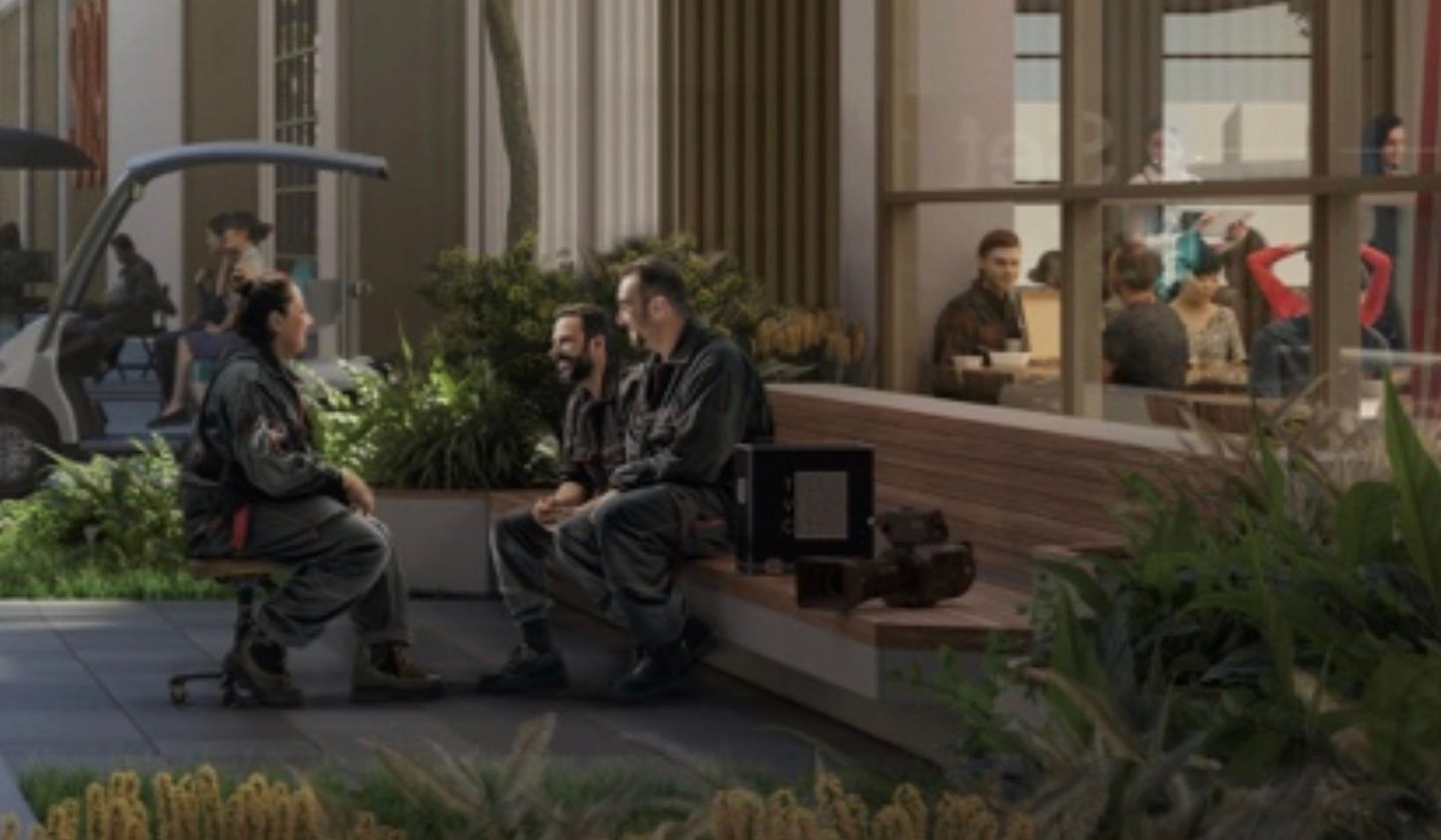
We are truly in the throes of a delirious, Babylon-style bacchanal for articles about how Hollywood is dying. Limiting ourselves to just the last week:
The Hollywood Reporter covered a study that found the total number of TV episodes produced in 2024 fell by 5,000 from 2022 — from 16,000 to 11,000.
A New York Times story reports that the number of location shooting days in the LA area has dropped 40 percent from its 2016 high.
The LA Times ran a piece on how the fires could make building materials, insurance, and other aspects of local production even more expensive.
The Wrap talked to some AI people who think studios are going to start deploying AI for VFX production this year, potentially eliminating hundreds of jobs in single productions.
While Hollywood studios are still determining how the technology will best fit into their production pipelines, experts tell TheWrap that once it is capable of automating enough tasks, the list of VFX workers — which can sometimes exceed 1,000 in the credits of a major film or TV series like “House of the Dragon” — could be cut by 80% or more.
We are now years into a full-bloom doom boom here in the entertainment capital of the world. Every industry — restaurants, real estate, local media, city government — is openly suffering from the contagious wilt of film and TV production.
Except one, apparently: soundstage development.
Yes, equal and opposite to the doom boom is the absolutely unchained amount of media campus construction going on right now. A 2024 report from Cushman and Wakefield claims that, with the number of projects in development or already completed, the number of indoor stages in LA County could double just in the next few years.
Probably all in Santa Clarita or Long Beach, you’re thinking. Repurposed airplane hangars in the outer county. Wrong! We’re talking infill development in the city center. The soundstages are making their way downtown like Vanessa Carlton (whose downtown was also canonically DTLA).
Fewer shows, fewer episodes per show, fewer workers, double the space. Covid social distancing protocols will be easy to implement anyway.
An influential Deloitte white paper from September 2023, right after the strikes, has helped burnish the narrative of a production renaissance:
“For all markets, however, we found there is opportunity for continued investment in high-end, purpose-built facilities as modern, bespoke studios are in high demand and the preferred option of content producers.”
Especially in LA, they graphed:
Not sure that demand projection for 2024 turned out exactly right — shoot days in LA were lower than 2023, the lowest non-Covid year in three decades — but Deloitte saw a bigger upturn coming in 2025 thanks to expanded tax credits and a fully rebounded industry, bringing us back to late-teens levels of stage shortages. “Based on our analysis of the current supply and pipeline along with projected demand for film and episodic content needs, we anticipate little to no available soundstage space – with occupancy nearing 100% through 2025,” they said.
And we’re a lot better off than London:
Eat it, Charles! Superman is American again!
So how do we square the bleak articles with the buoyantwhite papers? Let’s avoid that question for a minute and look at some imaginary buildings.
Half the stage boom is thanks to our friends at the major studios, who are all dumping a bunch of money into their backlots.
Warner Brothers is adding 16 stages to their Ranch Lot in Burbank, a $500 million redevelopment. The demolition of the old stages forced the writers of Young Sheldon to destroy Meemaw’s house in a tornado.
NBC Universal just added about half a million square feet of office space and a “commons.” (The development made it onto the LAT “best new architecture projects” list.)
The Fox lot, still owned by Rupert Murdoch and curated by his presumptive heir Lachlan, is planning to add nine new stages and almost double its footprint.
Half of those stages are fake. “The investment reflects the nearly nonstop demand for stages that has emerged in the streaming television age,” wrote the LA Times in 2023 about the Fox expansion, mirroring Deloitte’s optimism.
Hackman Capital Partners — who already seem to own the entirety of Culver City, where they purchased a City Council race in 2022 — is also funding two huge expansions:
A $1 billion expansion of Television City on Beverly and Fairfax, adding 1.4 million new square feet and taking the stages from eight to 15, against the wishes of Rick Caruso and the Farmers Market.
A redevelopment of the Radford lot in Studio City, also for $1 billion.
And unlike Gene Hackman, Hackman Capital Partners is not ready to Get Shorty on Hollywood (sorry).
"We are confident these cycles will work themselves out and Los Angeles will continue to be the global capital of media," says Zach Sokoloff, who is overseeing the project and Hackman's upgrade of the Radford lot in Studio City. "When we talk to our customers, they want to film in L.A."
But we’re not just building out existing lots. There are also a lot of entirely new developments popping up. Maybe you’ve seen the big hole on Santa Monica just east of the 101. That hole is going to be Echelon Studios, a four stage, $450 million complex courtesy of Bain Capital and BARDAS Investment Group.
Very renderous. Here’s what that corner looked like in May 2009:
Look at my Kobe bike guy. That May the Lakers were in the playoffs, maybe gutting out their seven-game Western Conference semis against the Rockets and Ron Artest (a Laker two months later) on their way to a ring. And here’s dude literally riding for them. Hope he’s doing better than the Sears.
BARDAS, the Echelon developer, is run by a guy named David Simon. This David Simon did not create We Own This City, but he may have said it at some point: BARDAS has nine other projects right in Hollywood. They’re all studios or some variation on the “creative workspace.”
In an LA Times interview from last year, Simon talks about what he was thinking when he decided to go all in on Hollywood in 2018.
We said, “This industry is really growing. There seems to be strong demand for content, streamers are growing and a lot of production is happening.”
Very authentic 2018 conversation. I feel transported. Does it matter that nobody would say that now, when the actual construction is happening? No: Simon remains long on Hollywood. Not in spite of AI — because of it!!
“With artificial intelligence, LED screens and other technology [filmmakers] can create scenes inside of a soundstage that feels like you’re in New York or Paris, but you’re really in L.A. The more that content can be created locally, the better for the talent.”
We haven’t even gotten to the most ambitious new stage developer. That would be the New York real estate investment firm East End, who are building, get this:
A 97,000 sq. foot studio campus with two stages in Glendale (opened in June)
A 303,000 sq. foot campus with five stages right under the Sixth Street Viaduct in Boyle Heights (under construction)
A 611,000 sq. foot campus with 11 stages in Glendale across from Griffith Park (breaking ground this year)
A 1.28 million sq. foot, 16 stage, $1 billion campus called ADLA in the Arts District (almost entitled)
Almost two and a half billion square feet! All in the city center! The complex in the Arts District is one of three massive studio campuses being considered within a few blocks.
Like all of the other developers, East End assured the LA Business Journal they are long LA.
“I think nobody has given up on Los Angeles,” Wainwright said. “It’s still the largest studio market in the world and I don’t think that’s changing. Well-located, well-built studios have generally always been full in Los Angeles, and I don’t think that’s going to change.”
Nobody has given up! The cycles will work themselves out! Thrive in ‘25! Billions of dollars and dead trees supporting a bet that Hollywood is headed for a production comeback — particularly in TV, which local studios rely on much more than film.
Who is going to order the TV episodes remains undetermined. Netflix is the only streamer that is actually spending more on production this year rather than less.
I would love to believe. The money people are looking decades ahead — it’s very possible that they just know better than the doomers, and that new supply could help call back runaway production and drive more demand. Flexible filming spaces for all sizes of production are good for business, and even if they don’t fill up, higher vacancy rate to make productions cheaper wouldn’t hurt either. And no matter where the industry is headed, there is a well-established need to “modernize” production facilities in LA — we have both the most stages and many of the oldest.
But what if the soundstages aren’t actually an optimistic bet on the future, but on a former present that is now the past?
Real estate development is not the most nimble, reactive industry — almost all of the fundraising and design for these projects took place either in the roaring late-2010s or the early 2020s, when the downturn in filming was widely believed to be a pandemic blip. Like David Simon said, they got into the game when the industry was “really growing.” Concerns about streaming contraction and industry viability didn’t really set in until last year, when it was maybe too late to turn back.
Did they just buy high? Bad calls happen — half a trillion dollars in venture capital evaporated yesterday. A lot of developers were, until recently, going hard into data centers. If so, what does it mean if we’re in a studio bubble? How much would a soundstage recession ripple into the already-reeling commercial real estate landscape? Are we going to see the new stages repurposed to support a different kind of visual art, à la Oceanwide Plaza?
But maybe we can still pull off the Deloitte dream with a tactical hedge. That’s right: the LA studio developers should start a streaming platform. Bain Capital manages $185 billion in assets. They could easily break off $50 million to resurrect every single mid-2010s Eastside dramedy and put LA back to work.
Digg+, GroundFloor, High-Rise — plenty of name options, it doesn’t have to be good. What matters is all productions are local crew and soundstages only. “Groundbreaking” content. Again, none of this has to be good! It just has to float the local economy enough to protect the investments while someone figures out how to bring back cable.
But y’all aren’t ready to have that The Conversation. (Happy 95th birthday on Thursday to Gene Hackman).






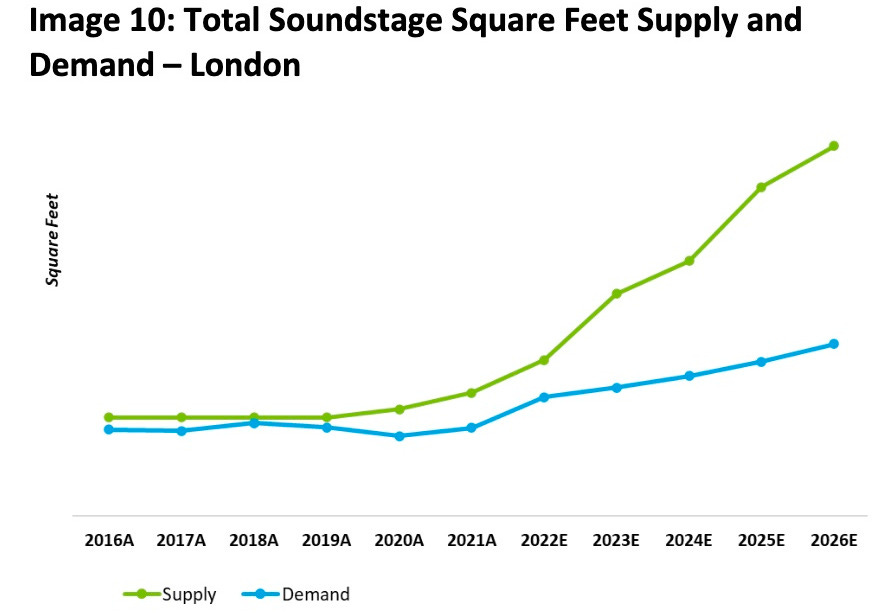
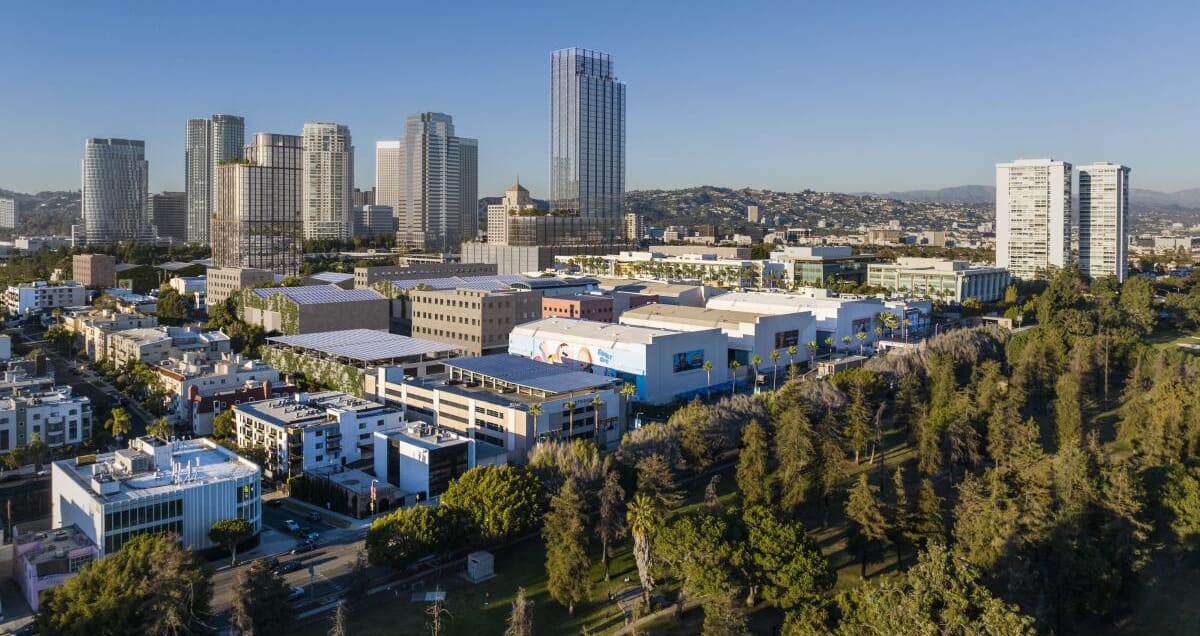
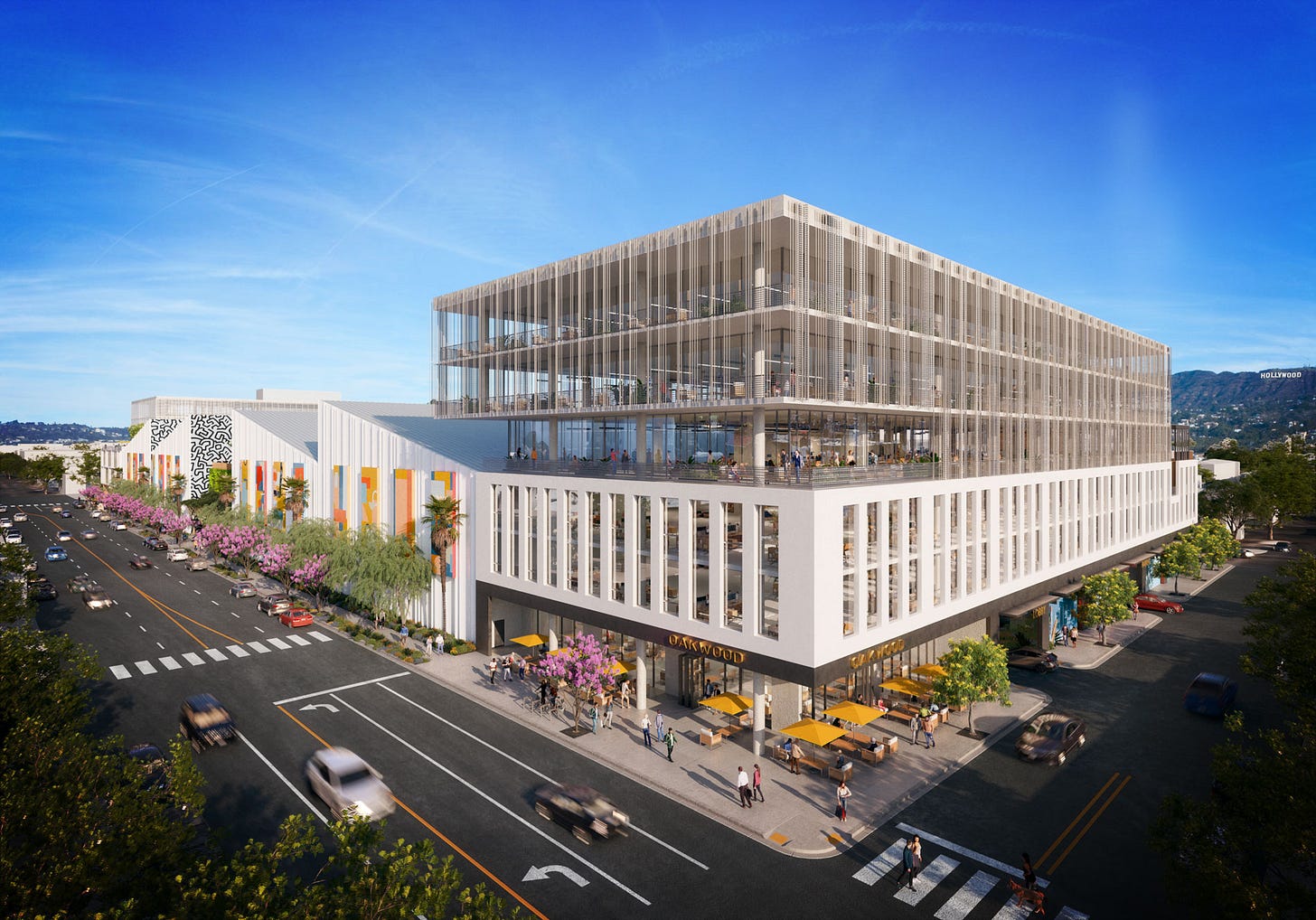
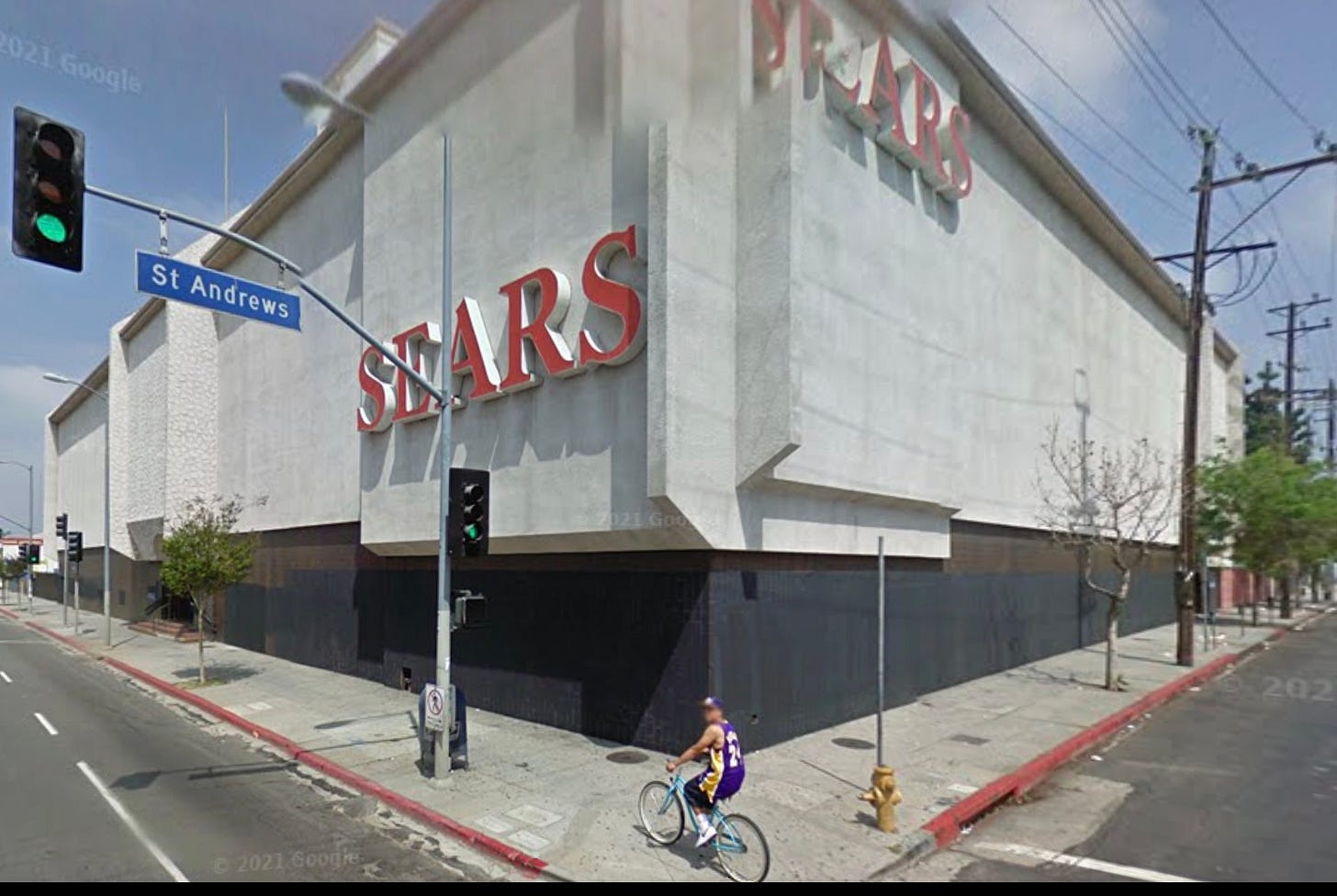
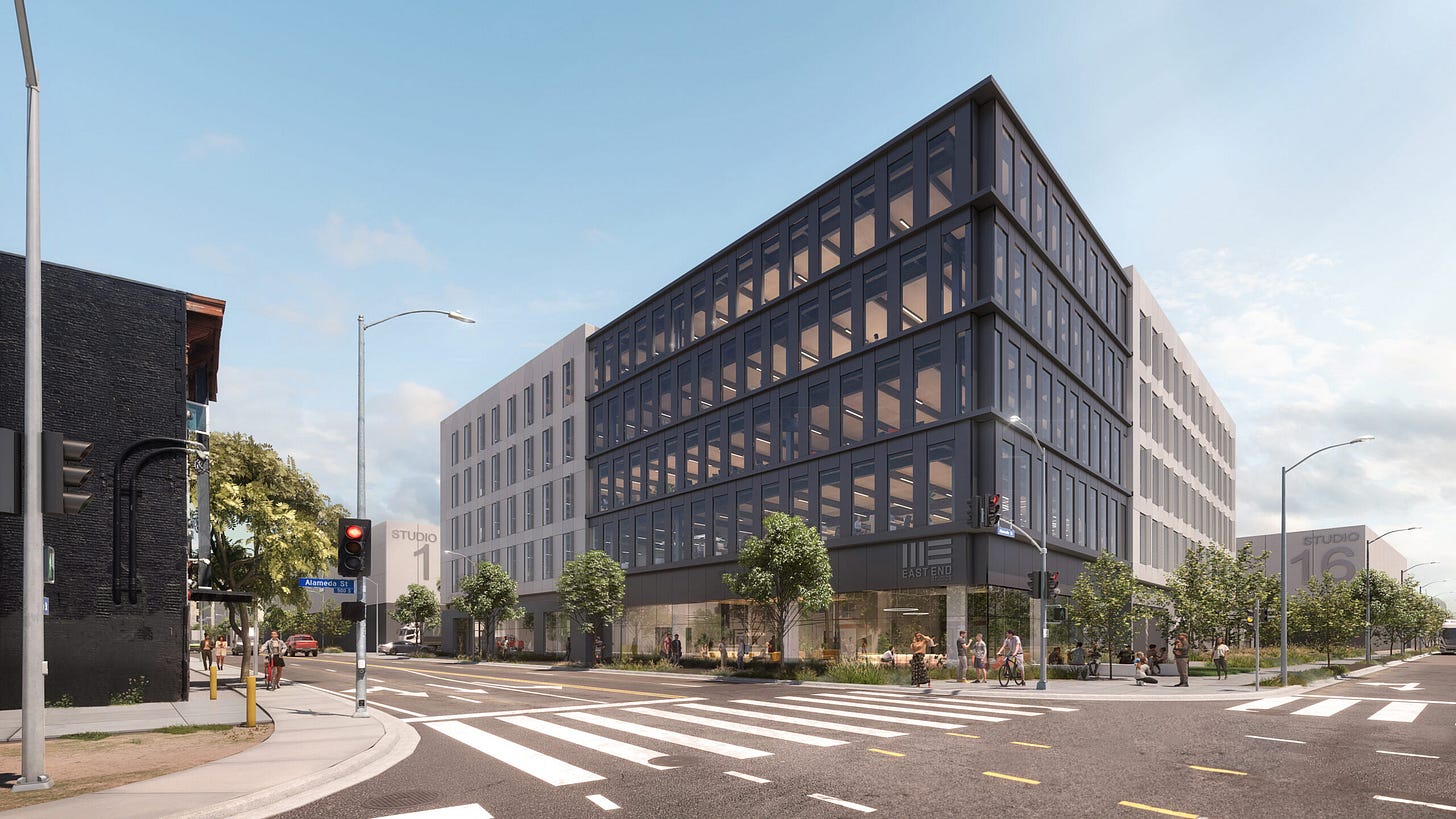
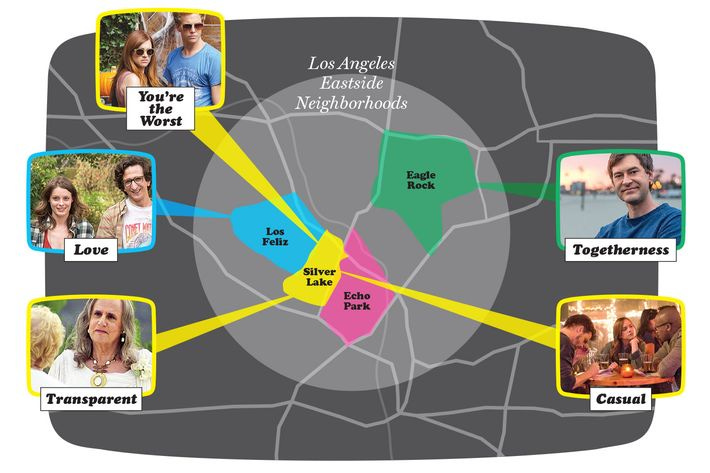
I should've left the industry the moment I realized the only thing I watch on TV are YouTube essays titled "Running Scared: The Tortured Pathos of Crash Bandicoot 2: Cortex Strikes Back"
I don’t think it would be easy but I think the current market is ripe for something like a streaming platform or a new network that is more small scale. Stuff closer to drop out. People still value “creators” and want stuff to watch but the big guys just aren’t delivering it anymore.
I think it would take big names like David Simon or Ben affleck or groups full of lovable talent like dropout but I definitely think lower to the ground operations that don’t rely on network funding streams could very easily find a good and workable niche. I think it would take media blitzes and coordinated pushes to sort of incept and create this movement but if it doesn’t get strangled to death by the big AMPTP players I think people would be interested. It might need stuff that doesn’t look quite how we imagined it, maybe more of a fusion of YouTuber and traditional media or something. But this weird stagnancy feels ripe for a new breakthrough of ways to do productions.